Chinese Name: 羧甲基纤维素钠
English Name: Sodium Carboxymethyl Cellulose; CMC-Na; SCMC; Sodium CMC
Definition: The carboxymethyl group substitution product of cellulose. Depending on its molecular weight or degree of substitution, it can be a completely soluble or insoluble polymer.
The latter can be used as a weakly acidic cation exchanger to separate neutral or basic proteins, etc. Carboxymethyl cellulose is a substituted product of the carboxymethyl group of cellulose.
Depending on its molecular weight or degree of substitution, it can be a completely soluble or insoluble polymer. The latter can be used as a weakly acidic cation exchanger to separate neutral or basic proteins, etc.
Sodium Carboxymethyl Cellulose can form high-viscosity colloids and solutions, and has the characteristics of adhesion, thickening, flow, emulsification and dispersion, shaping, water retention, protective colloid, film forming, acid resistance, salt resistance, suspension, etc., and is physiologically harmless , so it is widely used in production in the fields of food, medicine, daily chemicals, petroleum, papermaking, textiles, construction and other fields.
Name And Reaction Principle
1.Chemical name: Sodium Carboxymethyl Cellulose, also known as Carboxymethylcellulose, SCMC, CMC-Na
2. Full English name: Sodium Carboxylmethyl Cellulose
3.English abbreviation: CMC, SCMC, CMC-Na
4. Molecular formula: [C6H7O2(OH)2CH2COONa]n
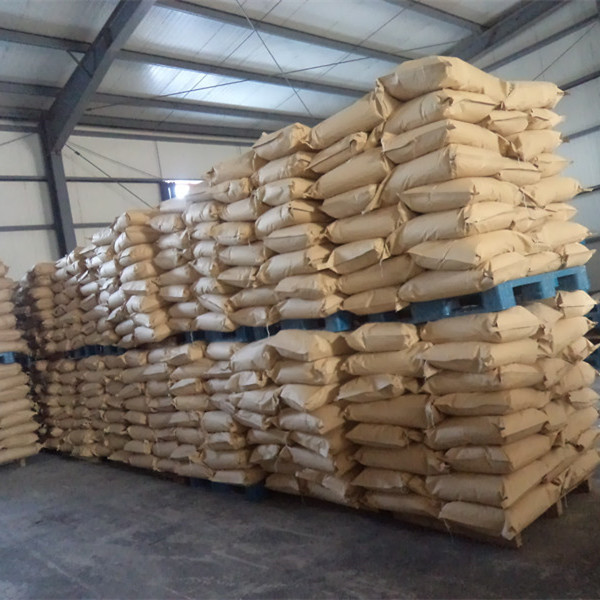
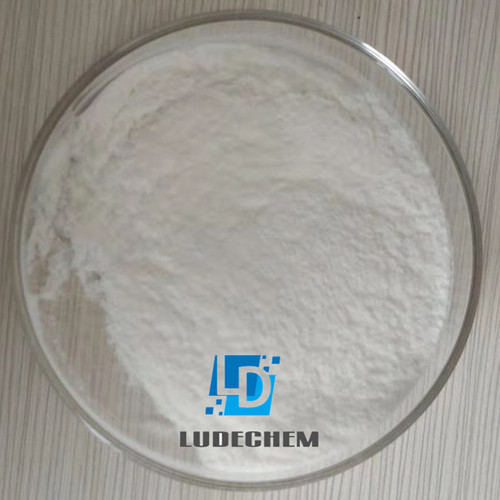
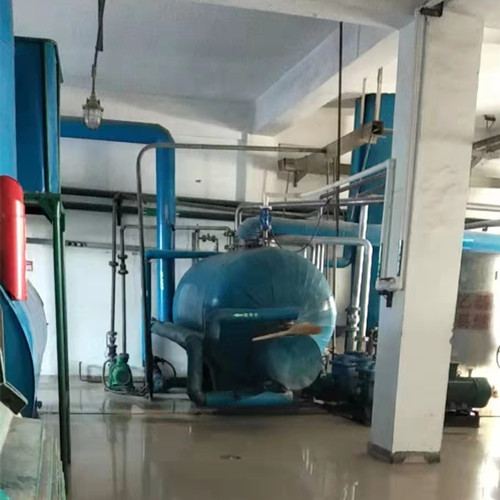
Reaction principle
The main chemical reactions of CMC are the alkalization reaction of cellulose and alkali to produce alkali cellulose and the etherification reaction of Alkali Cellulose and Monochloroacetic Acid.
Step 1: Alkalization: [C6H7O2(OH) 3] n + nNaOH → [C6H7O2(OH) 2ONa ] n + nH2O
Step 2: Etherification: [C6H7O2(OH) 2ONa ] n + nClCH2COONa → [C6H7O2(OH) 2OCH2COONa ] n + nNaCl
Physical Properties
Sodium Carboxymethyl Cellulose (CMC) is an anionic cellulose ether with a white appearance. Or micro-flocculated fiber powder or white powder, odorless, tasteless and non-toxic; easily soluble in cold or hot water to form a transparent solution with a certain viscosity.
The solution is neutral or slightly alkaline, insoluble in ethanol, isopropyl alcohol, and other organic solvents, but soluble in ethanol or solution containing 60% water. It is hygroscopic, stable to light and heat, and the viscosity decreases as the temperature increases.
The solution is stable at a pH value of 2 to 10. If the pH value is lower than 2, solids will precipitate. If the pH value is higher than 10, the viscosity will decrease. The discoloration temperature is 227°C, the carbonization temperature is 252°C, and the surface tension of 2% aqueous solution is 71mn/n.
Chemical Properties
Cellulose derivatives with carboxymethyl substituents are produced by treating cellulose to form alkali cellulose and then reacting with monochloroacetic acid. The glucose units that make up cellulose have three hydroxyl groups that can be replaced, so products with different degrees of substitution can be obtained. On average, 1 mmol of carboxymethyl is introduced per 1 g of dry weight. It is insoluble in water and dilute acid, but can swell and can be used for ion exchange chromatography. The pKa of carboxymethyl is about 4 in pure water and about 3.5 in 0.5 mol/L NaCl. It is a weakly acidic cation exchanger and is usually used for the separation of neutral and alkaline proteins above pH 4. Those with more than 40% of the hydroxyl groups replaced by carboxymethyl groups can be dissolved in water to form stable high-viscosity colloidal solutions.
The Main Purpose
Sodium Carboxymethyl Cellulose (CMC) is the product with the largest production volume, the most wide range of uses, and the most convenient use among cellulose ethers. It is commonly known as "industrial MSG".
1. Used in oil and natural gas drilling, well digging and other projects
① CMC-containing mud can form a thin, hard, low-permeability filter cake on the well wall, reducing water loss.
② After adding CMC to the mud, the drilling rig can obtain a low initial shear force, making it easy for the mud to release the gas trapped in it, and at the same time, the debris will be quickly discarded in the mud pit.
③Drilling mud, like other suspended dispersions, has a certain existence period. Adding CMC can stabilize it and extend its existence period.
④ Mud containing CMC is rarely affected by mold, so there is no need to maintain a high pH value or use preservatives.
⑤Containing CMC as drilling mud cleaning fluid treatment agent, which can resist the pollution of various soluble salts.
⑥ CMC-containing mud has good stability and can reduce water loss even if the temperature is above 150°C.
CMC with high viscosity and high degree of substitution is suitable for mud with low density, while CMC with low viscosity and high degree of substitution is suitable for mud with high density. The selection of CMC should be determined based on different conditions such as mud type, region, and well depth.
2. Used in the textile, printing and dyeing industry. The textile industry uses CMC as a sizing agent for sizing light yarns of cotton, silk wool, chemical fibers, blends and other strong materials;
3. Used in the papermaking industry. CMC can be used as paper smoothing agent and sizing agent in the papermaking industry. Adding 0.1% to 0.3% CMC to paper pulp can increase the paper's tensile strength by 40% to 50%, increase its compressive strength by 50%, and increase its kneadability by 4 to 5 times.
4. CMC can be used as a dirt adsorbent when added to synthetic detergents; in daily chemicals such as the toothpaste industry, CMC's glycerin aqueous solution is used as the gum base of toothpaste; in the pharmaceutical industry, it is used as a thickener and emulsifier; after the CMC aqueous solution is thickened, it is used as a float Mineral processing, etc.
5. Used in the ceramic industry as an adhesive, plasticizer, glaze suspending agent, and color-fixing agent for blanks.
6. Used in construction to improve water retention and strength.
7. Used in the food industry. The food industry uses CMC with a high degree of substitution as a thickener for ice cream, canned food, instant noodles, and a foam stabilizer for beer. It is used in the processing of jam, syrup, sherbet, snacks, ice cream drinks, etc. As a thickening agent, binder or shaping agent.
8. The pharmaceutical industry selects CMC with appropriate viscosity as binder, disintegrant for tablets, and suspending agent for suspensions.
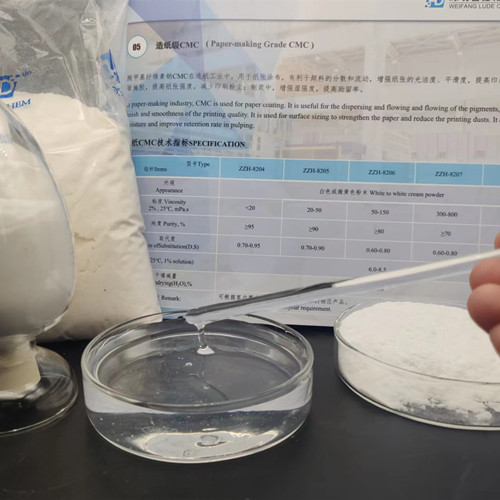
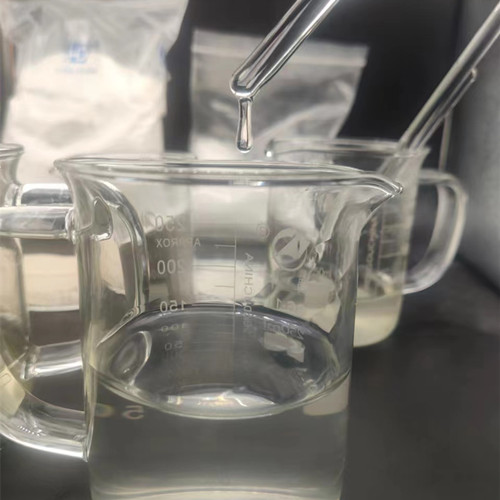
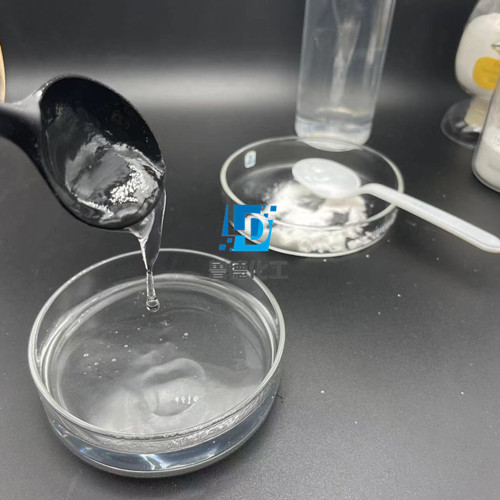
Dissolution Method
Mix CMC directly with water to prepare a paste glue solution and set aside. When configuring CMC paste, first add a certain amount of clean water to the batching tank with a stirring device. With the stirring device turned on, slowly and evenly spread CMC into the batching tank and stir continuously to make the CMC Completely fused with water, CMC can be fully dissolved. When dissolving CMC, the reason why it is necessary to spread it evenly and stir continuously is "to prevent the problems of agglomeration, agglomeration, and reduction of the amount of CMC dissolved when CMC meets water" and to increase the dissolution speed of CMC. The stirring time and the time for CMC to completely dissolve are not consistent. They are two concepts. Generally speaking, the stirring time is much shorter than the time required for CMC to completely dissolve. The time required for both depends on the specific situation.
The basis for determining the stirring time is: when the CMC is evenly dispersed in the water and no obvious large lumps exist, the stirring can be stopped and the CMC and water can penetrate and merge with each other while standing.
The basis for determining the time required for complete dissolution of CMC is as follows:
(1) CMC and water are completely bonded, and there is no solid-liquid separation between them;
(2) The mixed paste is in a uniform state and the surface is flat and smooth;
(3) The color of the mixed paste is close to colorless and transparent, and there are no granular objects in the paste. From the time when CMC is put into the batching tank and mixed with water until the CMC is completely dissolved, the time required is between 10 and 20 hours. Storage, custody and transportation
When storing this product, attention should be paid to moisture, fire, and high temperature protection, and it is required to be stored in a ventilated and dry place.
Protect from rain during transportation, and iron hooks are strictly prohibited for loading and unloading. After long-term storage and stacking pressure, this product may agglomerate when unpacking, which will cause inconvenience but will not affect the quality.
This product is strictly prohibited from contact with water during storage, otherwise it will gel or partially dissolve and become unusable.